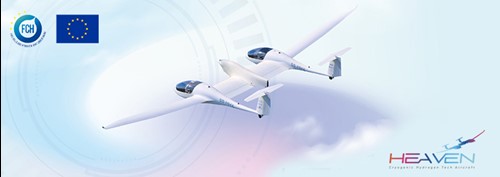News
HEAVEN advances design of first emission-free aircraft with cryogenic H2

The High powEr density FC System for Aerial Passenger VEhicle fueled by liquid Hydrogen (HEAVEN) project consortium in Europe is participating in the rise of cryogenic hydrogen and fuel cells as a mobility alternative on a planet affected by climatic change. This technology could deliver a commercially viable airplane solution around 2030.
Through the combined efforts of its six partners, the European consortium is actively participating in the rise of cryogenic hydrogen and fuel cells as a mobility alternative on a planet affected by global warming.
According to a statement, Air Liquide has fine-tuned the specifications and requirements applicable to the cryogenic tank and will be manufacturing and testing the storage in its facilities. H2Fly will soon finish the definitions, safety assessment and technical requirements for the safe integration of liquid hydrogen, the cryogenic tank and the proton exchange membrane (PEM) fuel cell systems within the aircraft. In charge of the conceptual design of the overall architecture of the powertrain, DLR will focus on the fuel cell system development, including the selection and determination of the balance of plant components and their assembly to a full-scale system. In addition to that, the operation strategies will be determined and the system controller will be developed.
Liquid-hydrogen based energy storage coupled with next generation of fuel-cell systems could deliver a commercially viable airplane product with an entry into service around 2030, with capability of operating multiple flights before refueling.
Pipistrel has been focused on developing special modifications to the demonstration aircraft to facilitate the integration of the liquid hydrogen fuel tank designed by Air Liquide, ensuring best industry practice and established ARP and latest SAE AIR6464 guidelines are encompassed. Concurrently Pipistrel is already applying lessons learned from the collaboration with Air Liquide to conceptualize future larger liquid hydrogen powered aircraft, in particular looking at the Miniliner 19-seat class of zero emission short-haul future advanced aerial mobility. 2021 will mean the start of the effort for the design of the integration of the ElringKlinger fuel cells into the fuel cell system developed by DLR and the necessary airframe modifications. Logistics and planning for system coupling and integrated systems tests will also be part of this year’s effort.

